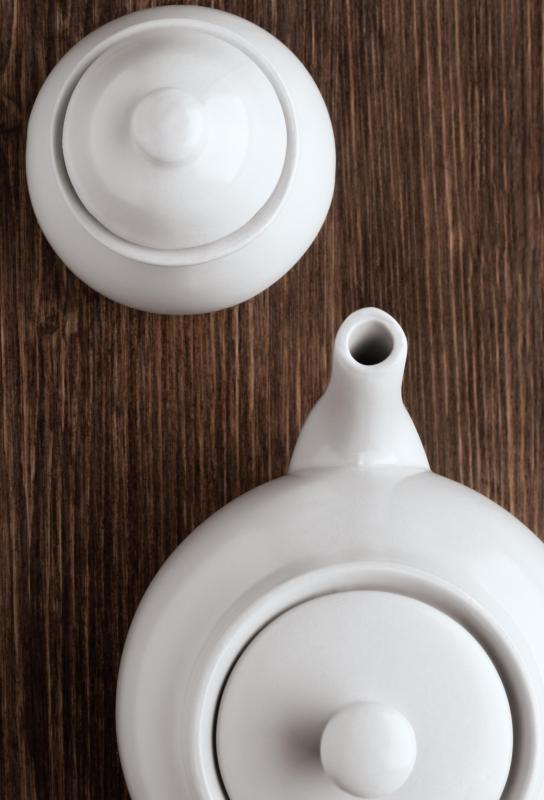At DelightedCooking, we're committed to delivering accurate, trustworthy information. Our expert-authored content is rigorously fact-checked and sourced from credible authorities. Discover how we uphold the highest standards in providing you with reliable knowledge.
What Is Bohea?
Bohea is a black tea blend that originates in the Wuyi mountain region of southeastern China. It is widely believed to be the first variety of black tea ever blended in China, created at the behest of English colonists who had trouble transporting the more traditional green teas on the long sea voyage back to England. Green tea was the only kind of tea in China for many centuries. Black teas use the same leaves, but undergo very different processing.
For a time, the term “bohea” was used as a generic word for all black teas, no matter their origin. It was not until tea masters began perfecting their black blending skills that bohea was recognized as a distinct variety in its own right. Most scholars agree that generic versions of this Chinese tea were the main cargo unloaded into Boston Harbor during the American colonists’ Boston Tea Party revolt in 1773.

True bohea tea comes from the leaves of a tea plant native to China’s Wuyi mountains. These mountains enjoy a high elevation, breaking 13,000 feet (about 2100 km) in some places. Soil conditions are typically rich, with constant moisture from persistent fog and high mineral concentrations, thanks to ancient volcanic activity.
Bohea shares characteristics with lapsang and pekoe teas, both of which are also cultivated in the Wuyi region. The difference is primarily in processing. Much of what defines a black tea is its pick time, its harvesting season, and its method of oxidation.

Little about the oxidation process has changed from the time of the first black tea innovation. It is different then green tea production, where leaves are dried shortly after picking. Fresh leaves destined for black teas are set out in single layers in a climate-controlled room or chamber. With the right moisture levels, the leaves will naturally turn black, which is a sign of preservation. Oxidized teas tend to last significantly longer than dried teas.
Bohea tea is typically oxidized on wooden planks, and is packaged once the first signs of blackness appear. Its preparation is much more rudimentary then more complex oolong teas, and it is not usually allowed to process with near the intensity of a modern lapsang variety. The finished tea’s flavor is smooth, but bold. Its brew color is deep orange, similar to most other black types of tea.
Many generically-labeled “black tea” products are made in the bohea tradition. The process is inexpensive, quick, and yields generally satisfying results. Still, the name bohea can only be properly applied to leaves grown in the Wuyi region. Though the process has taken off, the name remains connected to the geography.
AS FEATURED ON:
AS FEATURED ON:












Discuss this Article
Post your comments